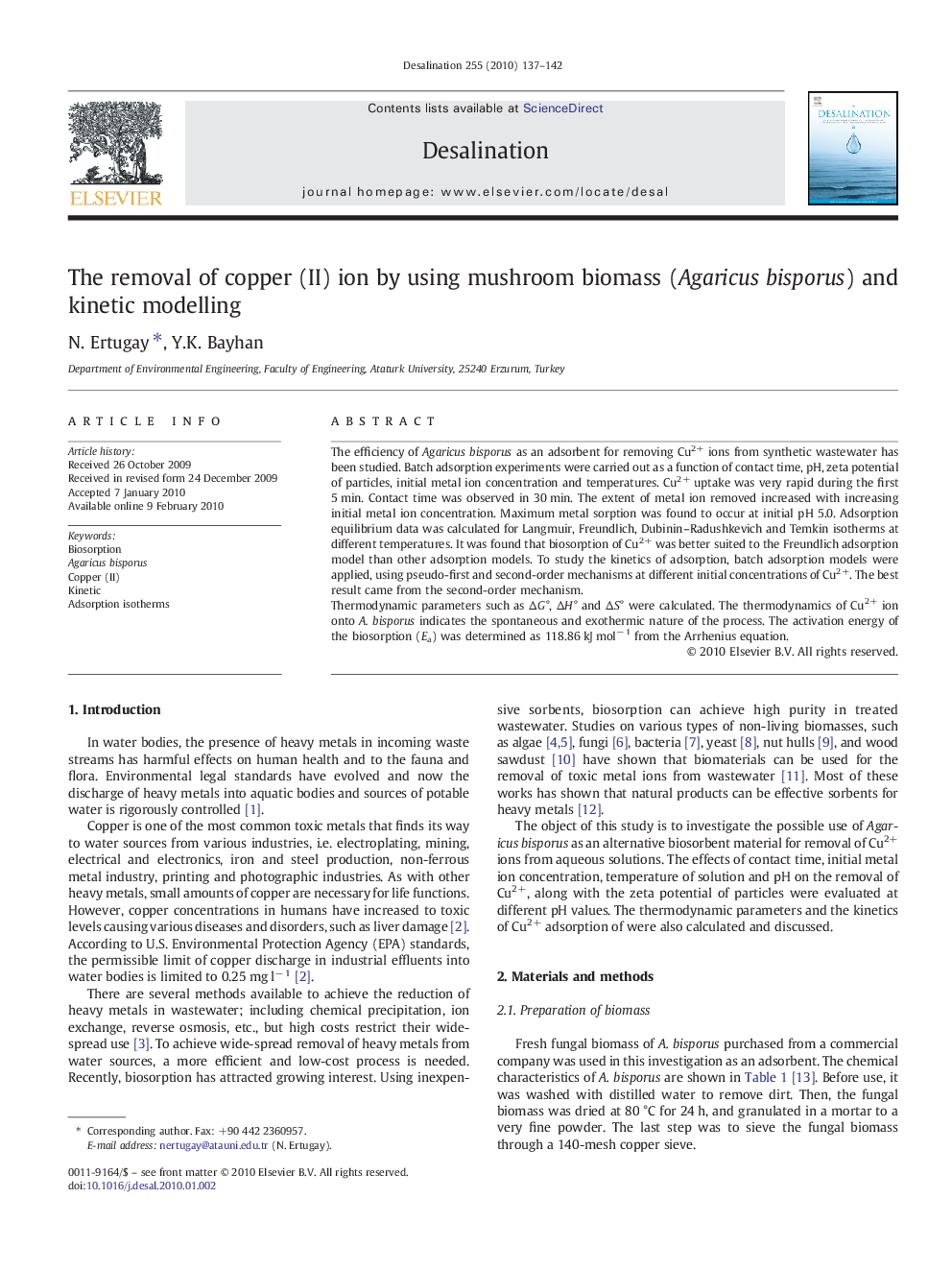| Article ID | Journal | Published Year | Pages | File Type |
|---|---|---|---|---|
| 625867 | Desalination | 2010 | 6 Pages |
The efficiency of Agaricus bisporus as an adsorbent for removing Cu2+ ions from synthetic wastewater has been studied. Batch adsorption experiments were carried out as a function of contact time, pH, zeta potential of particles, initial metal ion concentration and temperatures. Cu2+ uptake was very rapid during the first 5 min. Contact time was observed in 30 min. The extent of metal ion removed increased with increasing initial metal ion concentration. Maximum metal sorption was found to occur at initial pH 5.0. Adsorption equilibrium data was calculated for Langmuir, Freundlich, Dubinin–Radushkevich and Temkin isotherms at different temperatures. It was found that biosorption of Cu2+ was better suited to the Freundlich adsorption model than other adsorption models. To study the kinetics of adsorption, batch adsorption models were applied, using pseudo-first and second-order mechanisms at different initial concentrations of Cu2+. The best result came from the second-order mechanism.Thermodynamic parameters such as ΔG°, ΔH° and ΔS° were calculated. The thermodynamics of Cu2+ ion onto A. bisporus indicates the spontaneous and exothermic nature of the process. The activation energy of the biosorption (Ea) was determined as 118.86 kJ mol− 1 from the Arrhenius equation.
